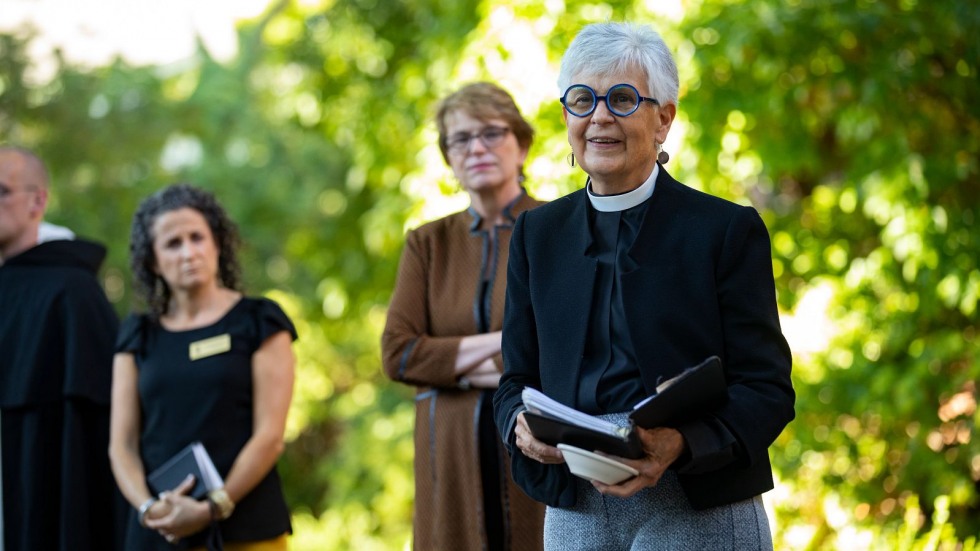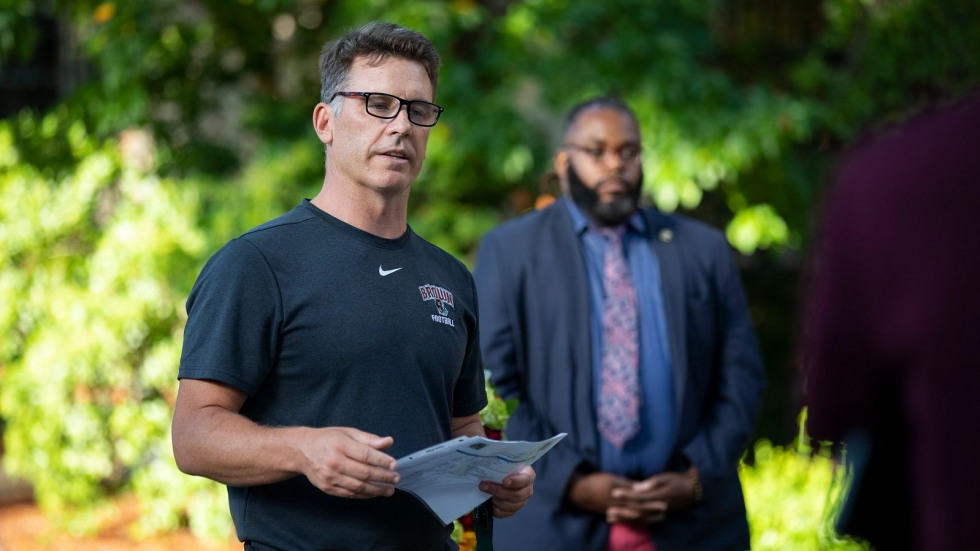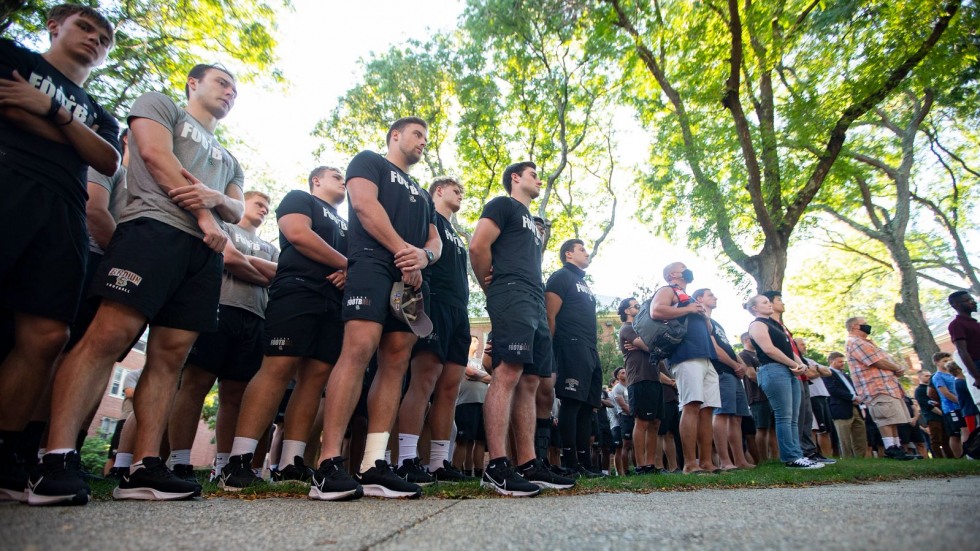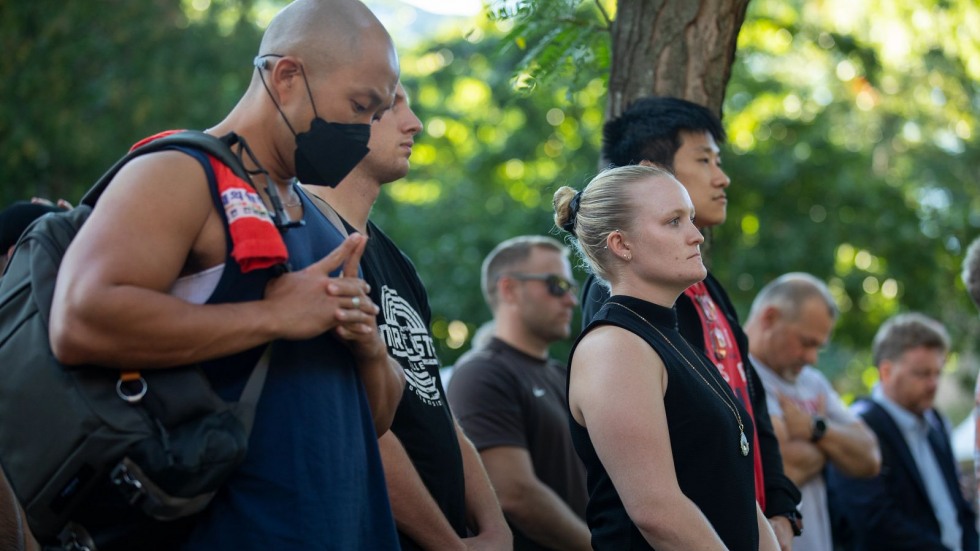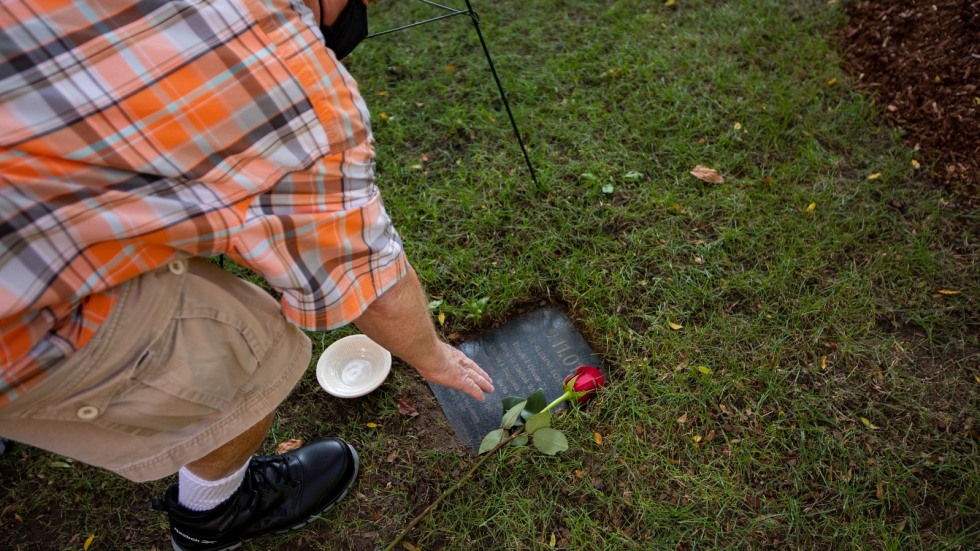PROVIDENCE, R.I. [Brown University] — On Sept. 11, 2001, more than 1,000 students, faculty and staff from Brown gathered at Manning Chapel and on the College Green, and lit candles across campus in recognition of the day’s tragic events and the nearly 3,000 lives lost in New York, Washington and Pennsylvania.
Two decades later, members of the University community convened to offer prayers and remarks at a memorial marker on campus that honors the six Brown alumni killed on 9/11.
Jermaine Pearson, associate chaplain at Brown, began the Friday, Sept. 10, ceremony by reading the names of those six graduates: Donald F. Greene, Class of 1971; Charles Margiotta, Class of 1979; David Laychak, Class of 1983; Joanne F. Weil, Class of 1984; Raymond Rocha, Class of 1995; and Paul Sloan, Class of 1997.
With Laychak, Margiotta, Rocha and Sloan having played varsity football at Brown during their time as undergraduates, the current members of Brown’s football team turned out in full force at Friday’s event.
Head Coach James Perry shared in remarks that Margiotta, a New York City firefighter who was off-duty at the time of the attacks, lost his life after rushing to the World Trade Center as a first responder. Sloan, he noted, was a Bears teammate of Perry’s in the 1990s, and his name now graces the team room at Brown’s athletic complex.
“This is always a special day, and will always be a meaningful day, for Brown Football,” Perry said of the 9/11 anniversary.
